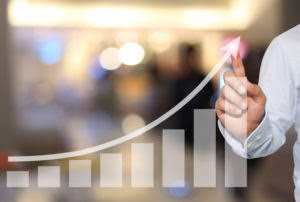- August 23, 2023
- Bookkeeping
- Comments : 0
What are Plant Assets? Definition, Examples, Management

This cost would be capitalised and added to the asset’s bookkeeping book value on the balance sheet. This includes purchase price, shipping costs, installation charges and any other costs directly attributable to bringing the asset to its working condition. Some fixed assets’ fair values can be extremely variable, needing revaluations as often as once a year. Revaluations every three to five years are permissible in most other circumstances, according to IFRS. Making continual improvements and continuously reviewing the quality of assets is an important part of keeping a company healthy.
Main Elements of Financial Statements: Assets, Liabilities, Equity, Revenues, Expenses
Land can be purchased by a start-up company for a single site, but a bigger company can possess several types of land that serve diverse functions for the company and its subsidiaries. Each asset serves a certain purpose in how it helps a business, and it is more advantageous to focus on their functions rather than their relative worth as long as they serve entities well. When researching companies, the financial statement is a great place to start. Based on the purpose of depreciation mentioned above, depreciation should only commence when the asset is ready for use and is at the location that it is intended to be used.

Main Purposes of Financial Statements (Explained)
In the balance sheet of the business entity, these assets are recorded under the head of non-current assets as Plant, property, and equipment. The assets can be further categorized as tangible, intangible, current, and non-current assets. It includes cash/bank, short-term securities, inventories, account receivables, etc. Examples of plant assets include factory machinery, delivery trucks, computers, desks, and manufacturing tools. Depreciation spreads the cost of a https://www.bookstime.com/ plant asset over its useful life.
Depreciation
- Buildings are assets that often retain higher quantities of value, such as office space or a physical location where consumers can do business.
- The total cost, including shipping and installation, comes to £110,000.
- These are physical assets that are expected to be financially useful to a company for more than a year.
- The purchase and sale of plant assets would affect a company’s cash flow.
- Even if a company does not operate on-site or own property, many businesses profit from purchasing land, even if they do not intend to use it until later.
- The resources are sometimes owned by the company and sometimes borrowed by external parties.
Finally, if required, the business or the asset owner has to book the impairment loss. In that case, the estimated realized value of the asset is less than the actual depreciated cost appearing in the books. They carry a monetary value used to earn revenue and profit for the enterprise.


Companies commonly list their net PP&E on their balance sheet when reporting financial results. A plant asset is any asset that can be utilized to produce revenue for your company. Plant assets are goods that are considered long-term assets because of their high price or worth, even if the assets depreciate. It’s crucial to recognize which of your assets are plant assets, regardless of their worth. The goods you can include in this category are usually useful assets that help your business well.
- Knowing how to end a business note or email is an important skill to develop.
- Knowing when and how much to invest in improvements helps manage capital expenditures wisely.
- The PP&E account is remeasured every reporting period, and, after accounting for historical cost and depreciation, is defined as book value.
- If the asset’s value is found to be impaired, the carrying amount would be reduced.
Understanding Depreciation
- This includes purchase price, shipping costs, installation charges and any other costs directly attributable to bringing the asset to its working condition.
- Companies manage their plant assets by keeping track of them, making repairs when needed, and replacing them at the right time.
- A new press technology has just launched in the market, and the company owner decided to acquire the machine.
- Over time, plant asset values are also reduced by depreciation on the balance sheet.
- Do take note that freehold land should not be depreciated since they have indefinite useful lives.
- On the other hand, the borrowed money is the liability or obligation for the business entity.
They are what are plant assets used for manufacturing and selling the goods and services of the company. The purchase and sale of plant assets would affect a company’s cash flow. Equipment is also quite valuable and crucial to the operation of any organization. It propels operations forward and allows a company to generate money on a consistent basis. Equipment is also one of the most varied forms of plant assets since it differs based on the industry or the specific demands of each company. The assets on a balance sheet contribute to a company’s overall profitability and worth.

Balance Sheet
They are usually land and building, plant and machinery that may be fixed or movable, or any other equipment that can be categorized as the same. They are recorded at cost and are depreciated over the estimated useful life, or the actual useful life, whichever is lower. Depreciation expenditures, on the other hand, are the appropriate part of the cost of a company’s fixed assets for the time period.

Current assets typically include cash, inventory, accounts receivable, and other short-term liquid assets. In contrast, plant assets represent long-term property expected to be around for at least a year, often quite a bit longer than that. In this article, we’ve explained the concept of plant assets in very detail. We hope you’ll know the difference between plant assets and other non-current assets and the accounting treatment. Unique from regular office supplies or inventory for sale, plant assets are capital investments meant to serve the company for many years. Plant assets are reported within the property, plant, and equipment line item on the reporting entity’s balance sheet, where it is grouped within the long-term assets section.
Plant assets are deprecated over their useful lives using the straight line or double declining depreciation methods. Plant assets are a specific type of asset on a company’s balance sheet. Machinery needs regular maintenance; software requires updates to stay useful and secure.

